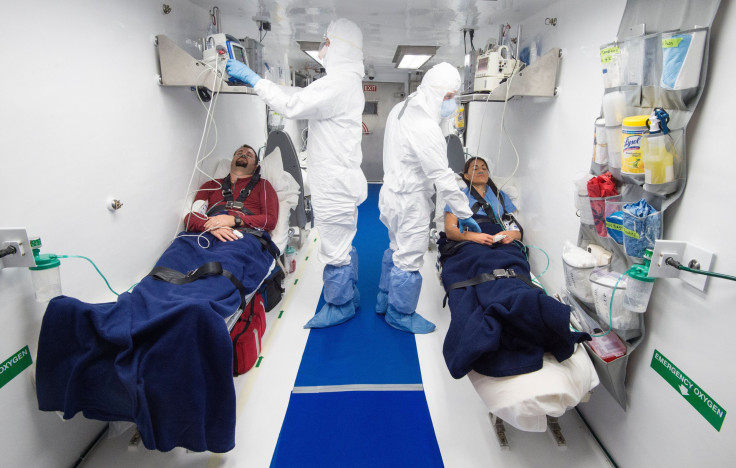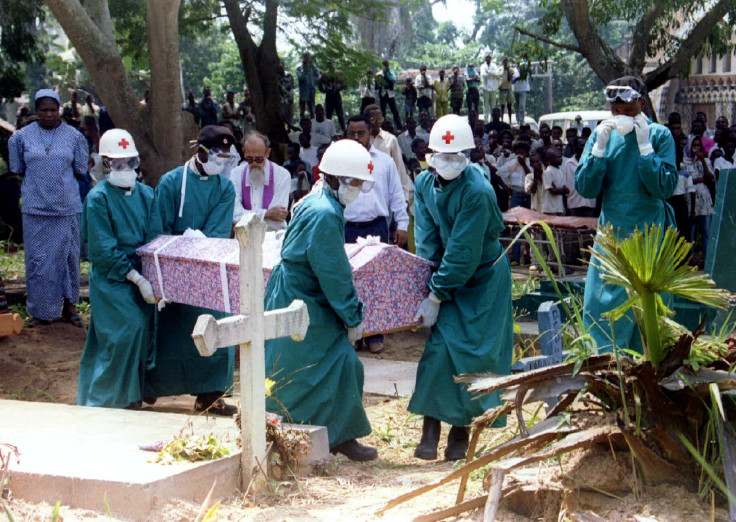Ebola Cure Found: Two New Drugs Significantly Lower Death Rate

Ebola virus disease (EVD), the lethal infectious disease that once killed 90 percent of its victims, is now curable.
Medical experts at the frontline of the fight against this disease that’s claimed more than 11,000 lives worldwide say ebola can no longer be called an incurable disease. This, because two drugs being tested in an ongoing major outbreak in the Democratic Republic of the Congo (DRC) were found to have significantly reduced the disease’s death rate.
These new treatments are two monoclonal antibodies that block the Ebola virus.
The first is REGN-EB3, a cocktail of three monoclonal antibodies against Ebola made by U.S. firm Regeneron Pharmaceuticals Inc. in New York State. REGN-EB3 had the lowest overall death rate at 29% in trials at four DRC centers, said Anthony Fauci, a director of the U.S. National Institute of Allergy and Infectious Diseases (NIAID).
The second is a monoclonal antibody named mAB114 made by Ridgeback Biotherapeutics, which had a mortality rate of 34%. This particular antibody was derived from a single antibody from the blood of a person that survived Ebola in the DRC in 1995. mAB114 was developed by NIAID.
In contrast, the overall mortality of those given ZMapp (the current preferred treatment) was 49%, while that of Remdesivir was 53%.
Results for patients that arrived at a treatment center soon after they became sick and were treated with the monoclonal antibodies were even more impressive. Their death rates came to only 6% with REGN-EB3, 11% with mAB114, 24% on ZMapp and 33% with Remdesivir.
Because of the clear superiority of these two monoclonal antibodies, the trials at the DRC have been stopped, said the World Health Organization (WHO). The tests began in November 2018. All Ebola treatment units will now use the two monoclonal antibody drugs.
“From now on, we will no longer say that Ebola is incurable,” said Prof Jean-Jacques Muyembe, the director general of the Institut National de Recherche Biomédicale in DRC, which oversaw the trial. “These advances will help save thousands of lives.”
“Now that 90% of their patients can go into the treatment center and come out completely cured, they will start believing it and building trust in the population and community,” he said.
These antibodies showed substantially more effect in clinical trials undertaken at four DRC towns being ravaged by the disease, according to WHO and NIAID, a co-sponsor of the trial.
The trial was the first-ever multi-drug randomized trial for Ebola and was pushed ahead despite the highly complex and challenging circumstances, said Dr. Jeremy Farrar, director of Wellcome and co-chair of the WHO Ebola therapeutics group.
“A long-running outbreak like this takes a terrible toll on the communities affected and it is a sign of just how difficult this epidemic has been to control that there have already been enough patients treated to tell us more about the efficacy of these four drugs,” he said.
Dr. Farrar said the trial will have saved lives. The next phase should reveal more about which of the two monoclonal antibodies works best in certain settings.
“The more we learn about these two treatments, and how they can complement the public health response, including contact tracing and vaccination, the closer we can get to turning Ebola from a terrifying disease to one that is preventable and treatable. We won’t ever get rid of Ebola but we should be able to stop these outbreaks from turning into major national and regional epidemics,” he said
WHO said the average EVD case fatality rate is some 50%. Fatality rates have varied from 25% to 90% in past outbreaks.

© Copyright IBTimes 2025. All rights reserved.





















